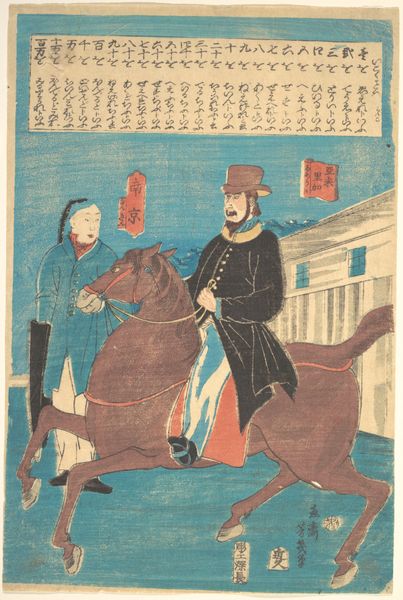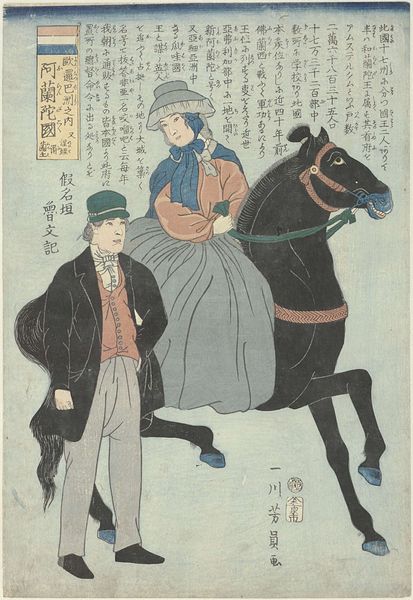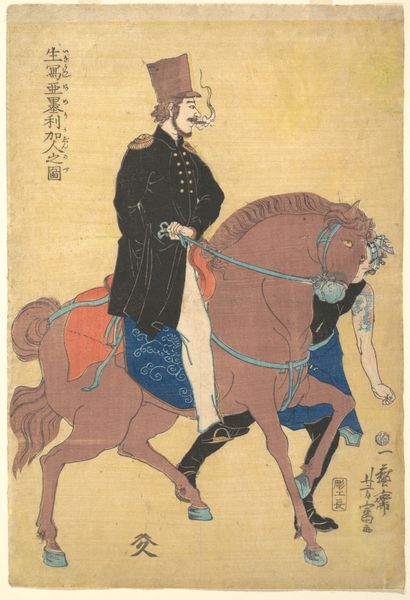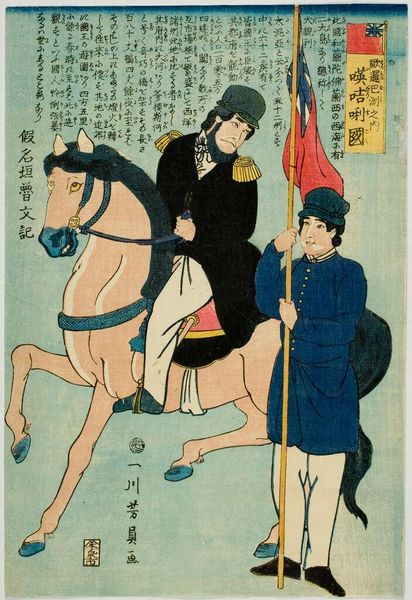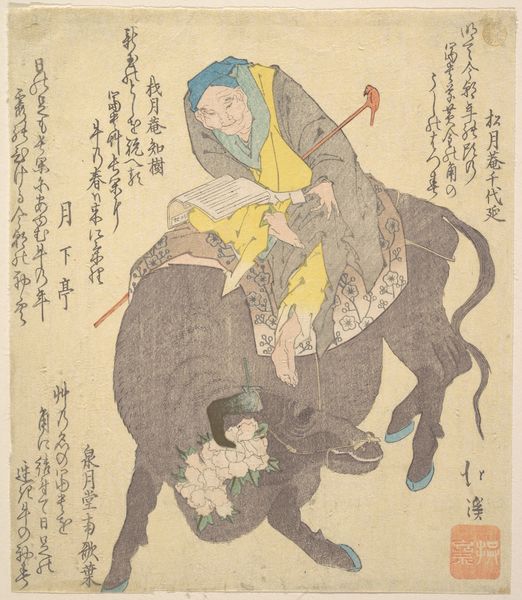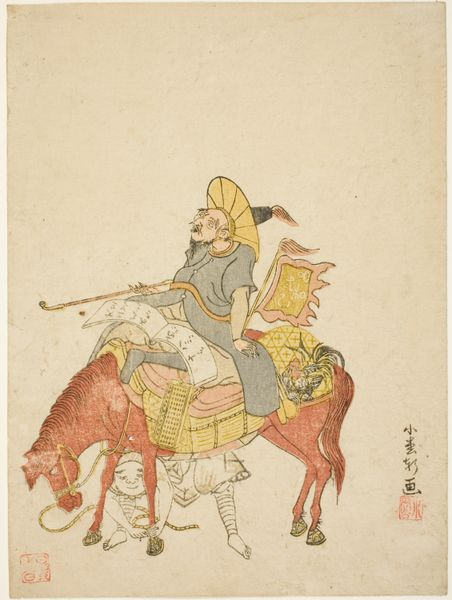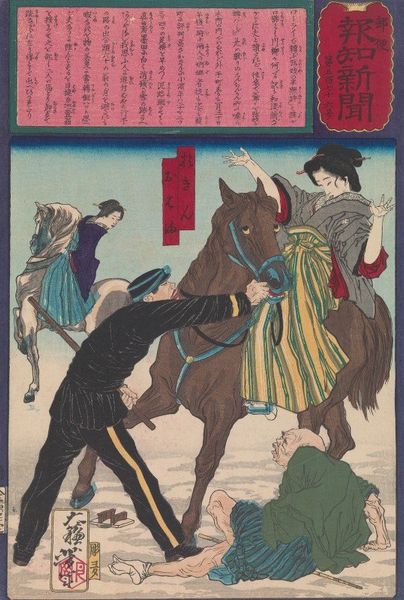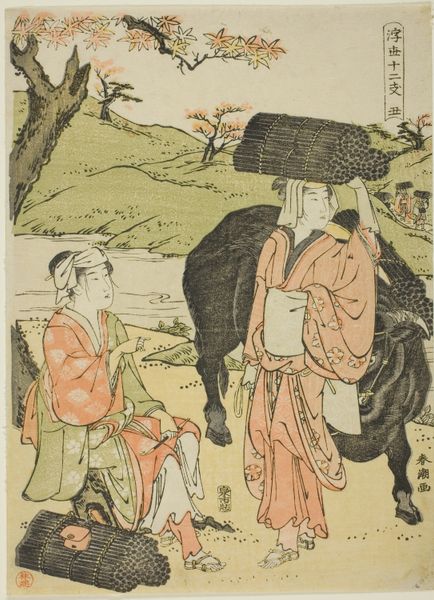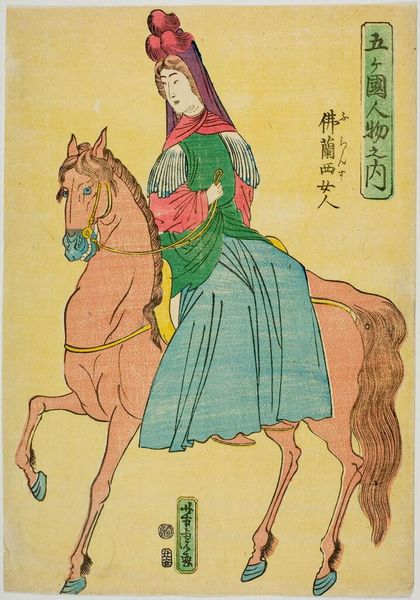
An American on Horseback and a Chinese with a Furled Umbrella 1860
0:00
0:00
print, woodblock-print
#
portrait
#
narrative-art
# print
#
asian-art
#
ukiyo-e
#
woodblock-print
#
horse
#
men
Dimensions: 14 x 9 in. (35.6 x 22.9 cm)
Copyright: Public Domain
Editor: This woodblock print, "An American on Horseback and a Chinese with a Furled Umbrella" by Utagawa Yoshiiku, made around 1860, presents a curious scene. The figures are quite stiff, almost like actors on a stage. What do you make of it? Curator: Well, let's unpack those visual symbols. Look at the way the American is depicted: high on a horse, towering over the Chinese figure. What does the artist imply by placing him so literally on a pedestal? Editor: Power? Authority? Is it just a commentary on the cultural dynamics of the time? Curator: It's precisely that intersection, isn’t it? The West meeting the East, filtered through the lens of a Japanese artist. Consider the closed umbrella. In Japanese art, umbrellas often signify protection and status, but here, furled, its protective function is negated, suggesting vulnerability or perhaps a closed-off nature. And note the banners... what stories do you imagine those tell? Editor: Are those meant to mark territory? I am so curious to read the symbols as a cultural text. Curator: Yes! Think about cultural memory and continuity of those symbolic signs. Perhaps the flags, to someone at that moment, had very direct meanings. Editor: It’s amazing to think how the narrative changes as the symbols and their meaning shift across time. Curator: Exactly! These objects gain meaning based on historical encounters, as you pointed out. The symbols reflect both specific narratives of the moment, as well as broader cultural and psychological weights. So, next time you view any artwork, really *see* the symbolism and consider its emotional resonance! Editor: That is really interesting. Thank you, it makes me think about the artwork in a different light.
Comments
No comments
Be the first to comment and join the conversation on the ultimate creative platform.
